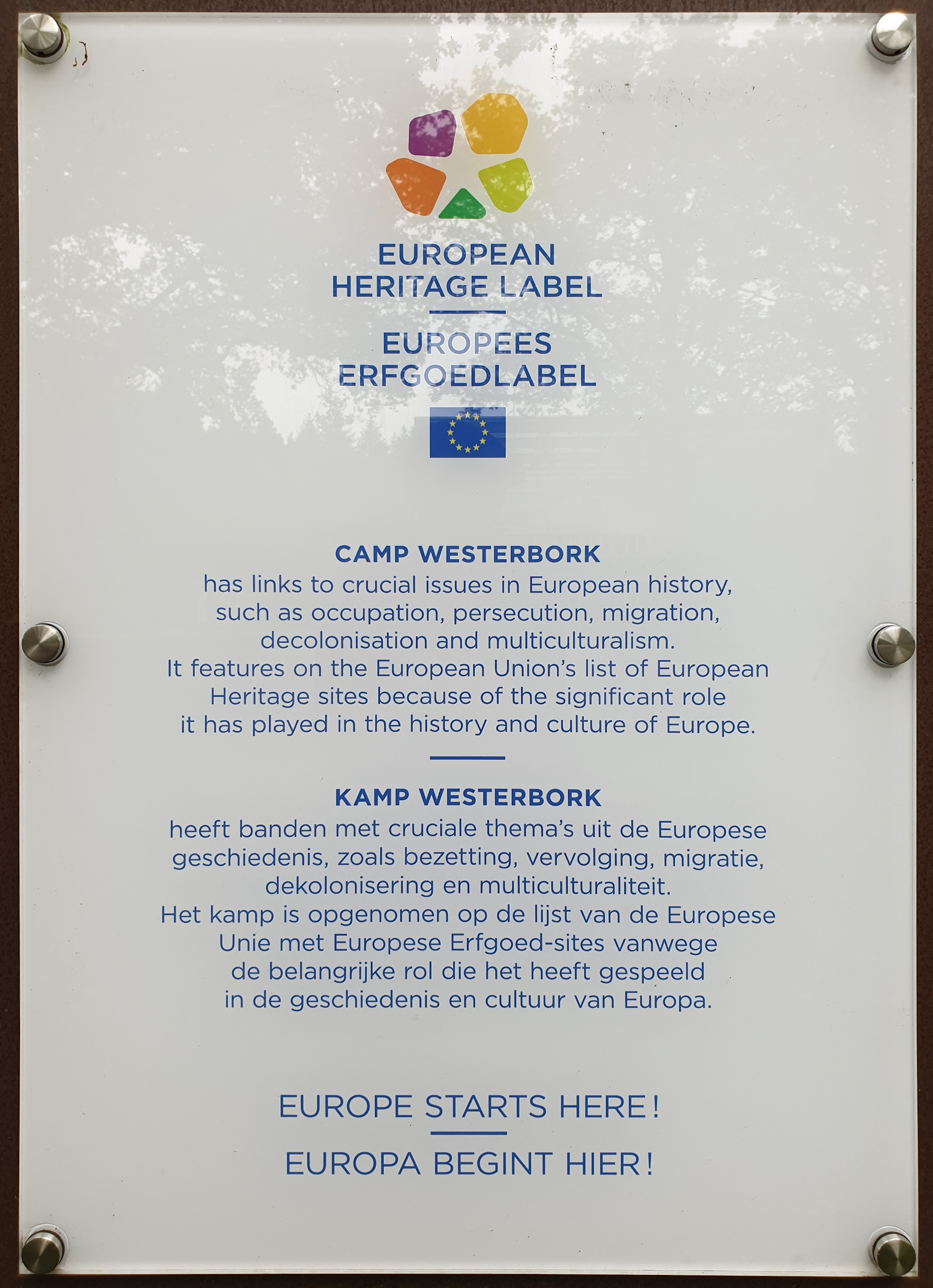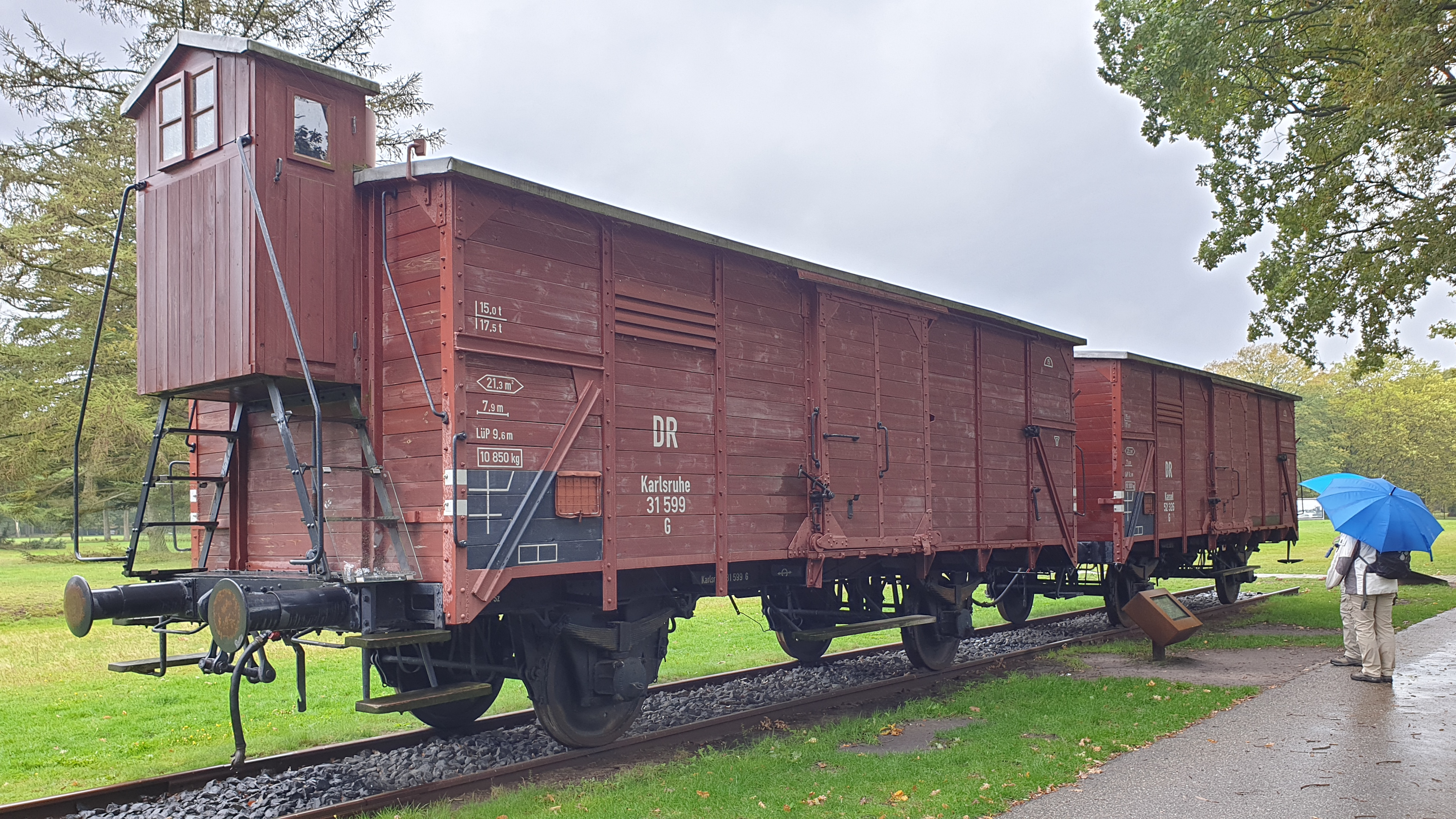
 All that remains of the camp structures is the commandant’s house, tastefully, immaculately decrepit under glass. I’ve never seen anything like this. It’s emblematic of the tone in the museum.
All that remains of the camp structures is the commandant’s house, tastefully, immaculately decrepit under glass. I’ve never seen anything like this. It’s emblematic of the tone in the museum.

 Westerbork now hosts an array of fourteen radio telescopes. Private transportation from the visitor center to the camp is not possible in order to avoid interfering with the telescopes. One’s € 9.25 admission fee includes transport to the camp on the shuttle bus which runs every twenty minutes. The shuttle bus driver was very nice. Yes, the photo is of Jews being loaded into cattlecars.
Westerbork now hosts an array of fourteen radio telescopes. Private transportation from the visitor center to the camp is not possible in order to avoid interfering with the telescopes. One’s € 9.25 admission fee includes transport to the camp on the shuttle bus which runs every twenty minutes. The shuttle bus driver was very nice. Yes, the photo is of Jews being loaded into cattlecars.

 In front of the cattlecars is a speaker from which a voice reads the list of those deported to extermination camps from Westerbork. A name, and an age. A name, and an age. Again and again. It’s mesmerizing, but it is also a passive enterprise, and encourages perceiving deportation as a sort of unstoppable force of nature. Resistance in the Netherlands and elsewhere was much more dynamic. The litany of names offers the listener an out, I think.
In front of the cattlecars is a speaker from which a voice reads the list of those deported to extermination camps from Westerbork. A name, and an age. A name, and an age. Again and again. It’s mesmerizing, but it is also a passive enterprise, and encourages perceiving deportation as a sort of unstoppable force of nature. Resistance in the Netherlands and elsewhere was much more dynamic. The litany of names offers the listener an out, I think.
 Site of the Punishment Barracks, where Jews were held after being found in hiding (like the Franks), as opposed to the main camp for those who went to Westerbork voluntarily.
Site of the Punishment Barracks, where Jews were held after being found in hiding (like the Franks), as opposed to the main camp for those who went to Westerbork voluntarily.
 National Westerbork monument, thoughtfully labelled „National Monument“. I think in general there’s just very little piety in my nature.
National Westerbork monument, thoughtfully labelled „National Monument“. I think in general there’s just very little piety in my nature.
 A cellar in which potatoes were stored.
A cellar in which potatoes were stored.